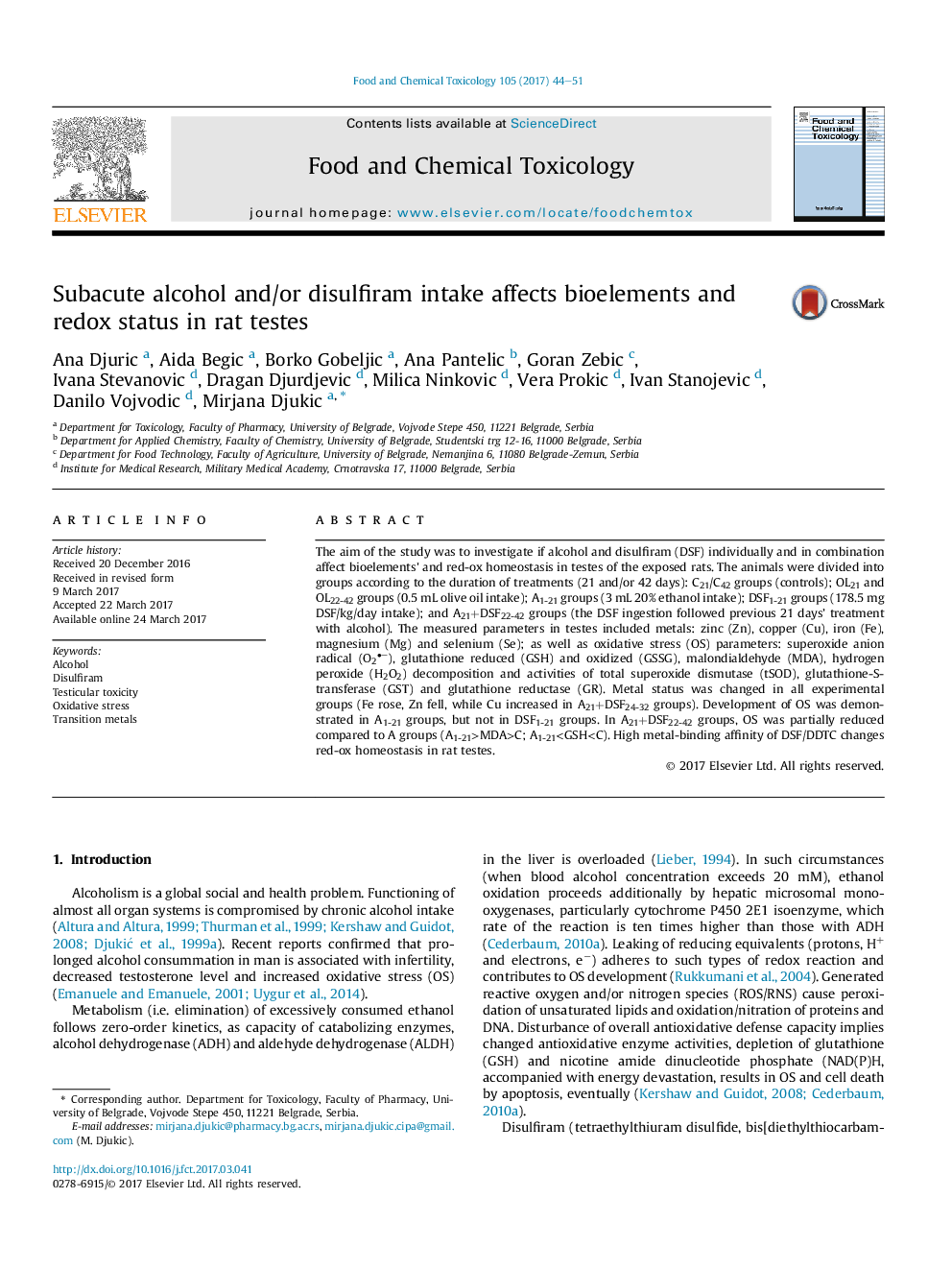| Article ID | Journal | Published Year | Pages | File Type |
|---|---|---|---|---|
| 5560171 | Food and Chemical Toxicology | 2017 | 8 Pages |
â¢The subacute exposure of rats to alcohol and DSF affects testicular bioelements and redox status.â¢Metal status is changed in all experimental groups (noteworthy increase of Fe and Cu).â¢O2â¢- increased in A and DSF groups, though OS was not developed.â¢In A1-21+DSF22-42 groups, OS was partially reduced compared to A groups.â¢By mimicking GSH/GSSG, binding metals or changing metalloproteins functions, DSF/DDTC modifies testicular red-ox homeostasis.
The aim of the study was to investigate if alcohol and disulfiram (DSF) individually and in combination affect bioelements' and red-ox homeostasis in testes of the exposed rats. The animals were divided into groups according to the duration of treatments (21 and/or 42 days): C21/C42 groups (controls); OL21 and OL22-42 groups (0.5 mL olive oil intake); A1-21 groups (3 mL 20% ethanol intake); DSF1-21 groups (178.5 mg DSF/kg/day intake); and A21+DSF22-42 groups (the DSF ingestion followed previous 21 days' treatment with alcohol). The measured parameters in testes included metals: zinc (Zn), copper (Cu), iron (Fe), magnesium (Mg) and selenium (Se); as well as oxidative stress (OS) parameters: superoxide anion radical (O2â¢-), glutathione reduced (GSH) and oxidized (GSSG), malondialdehyde (MDA), hydrogen peroxide (H2O2) decomposition and activities of total superoxide dismutase (tSOD), glutathione-S-transferase (GST) and glutathione reductase (GR). Metal status was changed in all experimental groups (Fe rose, Zn fell, while Cu increased in A21+DSF24-32 groups). Development of OS was demonstrated in A1-21 groups, but not in DSF1-21 groups. In A21+DSF22-42 groups, OS was partially reduced compared to A groups (A1-21>MDA>C; A1-21 Graphical abstractDownload high-res image (243KB)Download full-size image
